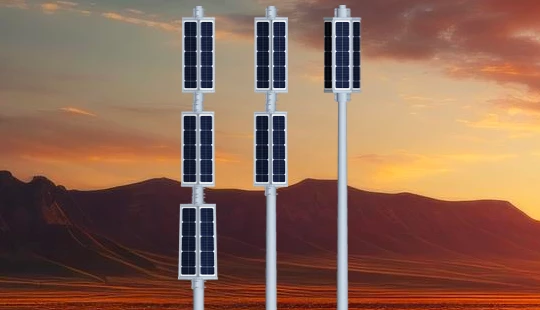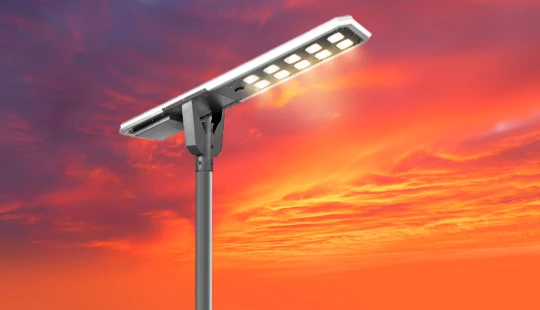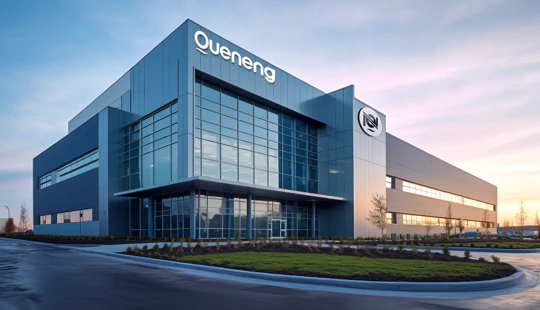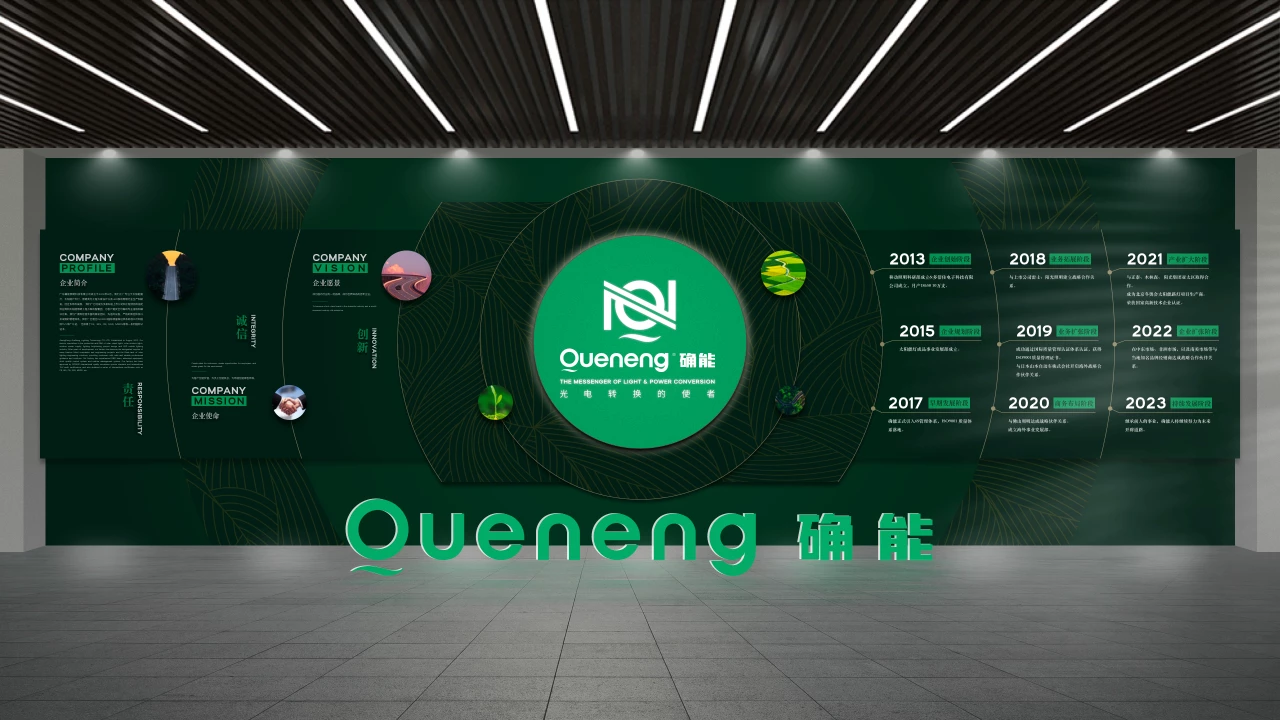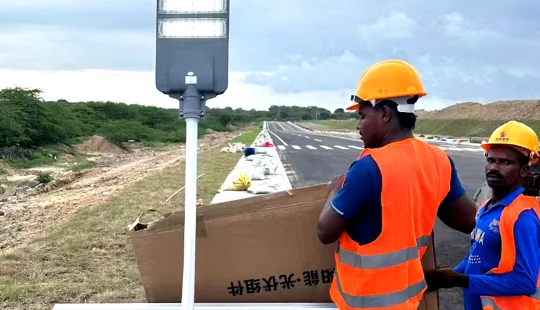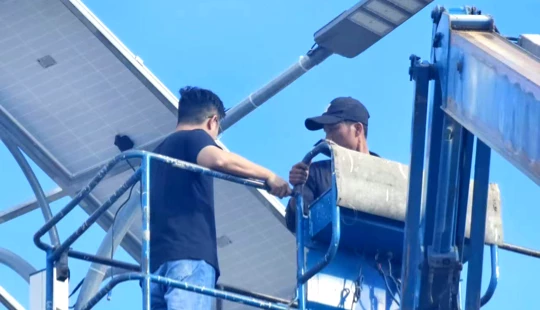best integrated solar street lights for municipalities | Quenenglighting Expert Guide
Navigating the Best Integrated Solar Street Lights for Municipalities
As cities worldwide strive for sustainability, energy independence, and reduced operational costs, integrated solar street lights have emerged as a compelling solution for municipal lighting. Unlike traditional grid-tied systems, these self-contained units offer unparalleled flexibility and environmental benefits. However, for professional buyers in procurement or public works departments, understanding the nuances of these systems is crucial to making informed, long-term investments. Based on common professional inquiries and industry trends, here are the top 5 questions municipalities typically ask when considering integrated solar street lights:
What are the key performance metrics and how do they impact actual municipal lighting needs?
For municipal applications, performance isn't just about brightness; it's about reliable, consistent illumination meeting specific standards (e.g., IESNA, EN 13201 for road categories). Key metrics include:
- Lumen Output & Efficacy: Modern high-quality LEDs typically offer an efficacy of 160 to 180 lumens per watt (lm/W). For a standard residential street, a light producing 3,000-5,000 lumens might suffice, while main arterial roads could require 8,000-15,000+ lumens for adequate safety and visibility. Integrated designs optimize light distribution.
- Autonomy (Backup Days): This refers to the number of days the light can operate without sufficient solar charging (e.g., during prolonged cloudy weather). Municipal-grade lights should offer a minimum of 3 to 5 days of autonomy to ensure consistent operation, even in challenging conditions.
- Solar Panel Efficiency: Look for lights equipped with high-efficiency monocrystalline silicon solar panels, which typically boast efficiency rates of 20% to 22% or higher. Higher efficiency means smaller panels can generate more power, leading to a more compact and aesthetically pleasing design.
- Charge Controller Technology: MPPT (Maximum Power Point Tracking) charge controllers are superior, extracting up to 20-30% more power from the solar panel compared to PWM (Pulse Width Modulation) controllers, especially in varying light conditions.
What is the expected lifespan and durability of an integrated solar street light system, particularly for municipal applications?
Long-term reliability is paramount for public infrastructure. The lifespan is determined by its core components:
- LED Lifespan: High-quality LED chips (e.g., Philips, Cree, Osram) have an L70 rating of 50,000 to 100,000 hours, meaning they will still produce 70% of their initial light output after that many hours of operation. This translates to 10-20 years of typical night-time use.
- Battery Lifespan: The battery is often the first component to degrade. Lithium Iron Phosphate (LiFePO4 or LFP) batteries are the industry standard for solar street lights due to their high cycle life, safety, and temperature stability. They typically offer 2,000 to 4,000+ charge/discharge cycles at 80% Depth of Discharge (DoD), translating to a practical lifespan of 5 to 10 years.
- Solar Panel Lifespan: Quality solar panels are exceptionally durable, with a performance warranty often extending 25 years, guaranteeing minimal degradation (e.g., no more than 20% power output loss over 25 years).
- Housing & IP Rating: The fixture's housing should be made from robust materials like die-cast aluminum, and have an Ingress Protection (IP) rating of at least IP65 to withstand dust, water jets, and harsh outdoor environments.
How do smart features and IoT integration enhance the efficiency and management of municipal solar street lights?
Smart features transform solar lights from simple illumination devices into intelligent city assets:
- Motion Sensing & Dimming: PIR (Passive Infrared) motion sensors allow lights to operate at a lower dimmed level (e.g., 30% or 50% output) when no activity is detected, conserving energy. When motion is detected, they instantly brighten to 100%. This can extend battery life and reduce light pollution.
- Adaptive Lighting: Some systems can automatically adjust brightness based on ambient light levels or predefined schedules, further optimizing energy use.
- Remote Monitoring & Control (IoT): Advanced systems can be integrated into a central management platform via 4G/5G, LoRaWAN, or Zigbee. This allows municipalities to remotely monitor battery status, solar charging, LED functionality, energy consumption, and even adjust lighting schedules or diagnose faults from a desktop or mobile device. This significantly reduces maintenance costs and response times.
- Data Analytics: IoT platforms can provide valuable data on usage patterns, energy savings, and system performance, aiding in future infrastructure planning and optimization.
What are the critical considerations for battery technology and ensuring reliable power autonomy?
The battery is the heart of an integrated solar street light, directly impacting its reliability and longevity:
- LiFePO4 (LFP) vs. Other Chemistries: As mentioned, LiFePO4 is strongly recommended. Compared to lead-acid or other lithium-ion variants (like NMC), LFP offers superior thermal stability (less prone to overheating), a longer cycle life (2000-4000+ cycles vs. 300-800 for lead-acid), and a wider operating temperature range (-20°C to 60°C or even wider with specialized designs).
- Capacity (Ah) & Voltage (V): The battery's capacity in Ampere-hours (Ah) and its voltage (typically 12V or 24V DC for integrated systems) must be appropriately sized for the LED load and desired autonomy. Oversizing ensures more consistent power delivery during extended cloudy periods.
- Battery Management System (BMS): A robust BMS is essential. It protects the battery from overcharging, over-discharging, over-current, and short-circuiting, significantly extending its lifespan and ensuring safe operation.
- Temperature Management: Integrated designs should consider battery placement to minimize exposure to extreme temperatures, as heat or excessive cold can reduce battery efficiency and lifespan. Some high-end models feature thermal management systems.
What warranties and maintenance requirements should municipalities look for to ensure long-term ROI?
A comprehensive warranty and low maintenance requirements are key to maximizing return on investment:
- Component-Specific Warranties: Reputable manufacturers typically offer:
- LED Module: 5-7 years
- Battery: 3-5 years (for LiFePO4, based on cycles)
- Solar Panel: 10-25 years (performance warranty)
- Charge Controller & Electronics: 3-5 years
- Full System Warranty: Many top manufacturers offer a comprehensive 3-5 year warranty on the entire integrated system, covering defects in materials and workmanship.
- Low Maintenance Design: Integrated units are inherently low-maintenance due to their self-contained nature. Beyond occasional cleaning of the solar panel (e.g., semi-annually or annually, depending on environmental dust), there should be minimal other routine maintenance. Remote monitoring capabilities further reduce the need for physical inspections.
- Availability of Spare Parts: Ensure the manufacturer can provide replacement parts (especially batteries and LED modules) for the expected lifespan of the product.
Quenenglighting: Your Partner for Municipal Solar Lighting
When selecting the best integrated solar street lights for your municipality, Quenenglighting stands out as a reliable and innovative partner. We specialize in high-performance solutions tailored for demanding public sector applications. Our products feature high-efficiency monocrystalline solar panels (22%+ efficiency), long-lasting LiFePO4 batteries with advanced BMS (3000+ cycles), and ultra-bright LEDs with efficacy exceeding 170 lm/W. We integrate intelligent control systems offering motion sensing, adaptive dimming, and robust IoT connectivity for remote monitoring and management, ensuring optimal energy utilization and reduced operational costs. Quenenglighting systems are engineered for extreme durability (IP66 rated) and come with comprehensive warranties, providing municipalities with a sustainable, reliable, and low-maintenance lighting infrastructure for decades to come.

Have more questions about our products or services?
The latest hot news you might like

Discover how solar panels power street lights, exploring the technology behind solar energy conversion, storage systems, and how solar-powered street lights are revolutionizing urban and rural lighting solutions.

Learn how AC Solar Hybrid Street Lights work, their advantages, disadvantages, system behavior in low-sunlight conditions, and why hybrid technology is ideal for regions with unstable sunlight.

Municipalities around the world are increasingly adopting solar-powered streetlights as part of their urban development strategies. Rising energy costs, the need for sustainable infrastructure, and government green initiatives are driving cities to switch from traditional street lighting to advanced LED solar streetlights.
Queneng Lighting provides municipalities with cost-effective, energy-efficient, and durable solar lighting solutions, ensuring safe and sustainable public spaces.
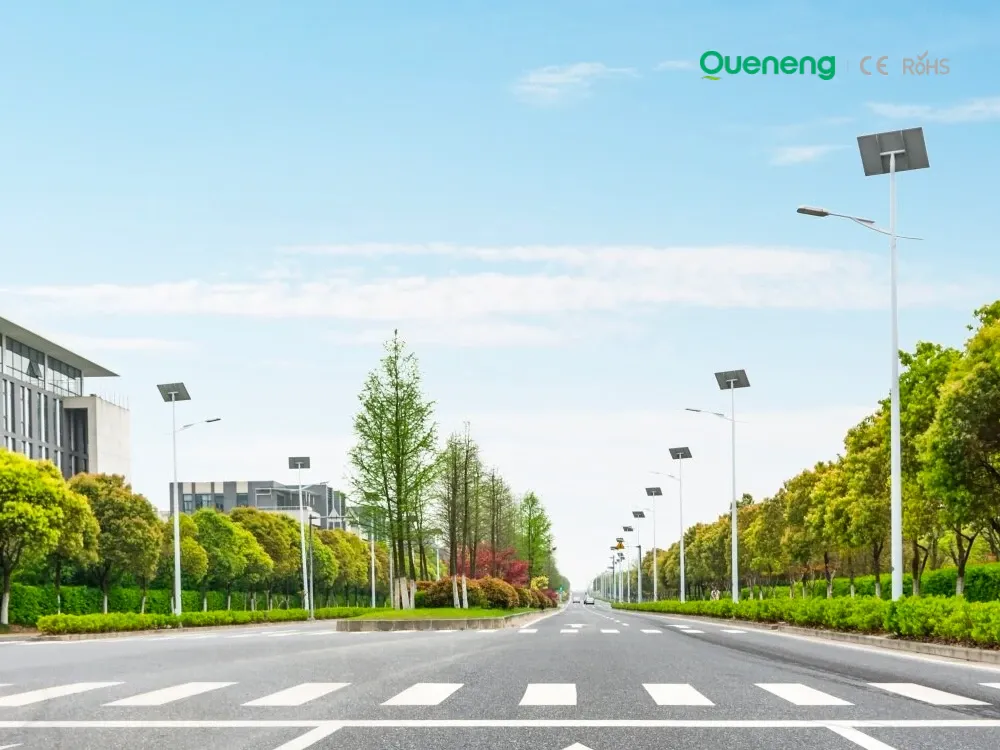
In recent years, the purchase of solar streetlights for municipalities has become a growing trend across the globe. Local governments are under pressure to reduce public expenditure, promote green energy, and create safer communities. Solar streetlights provide a reliable, cost-effective, and sustainable solution that meets these needs. Queneng Lighting, as a leading solar street lighting manufacturer, has supported multiple municipal projects worldwide with customized and energy-efficient solutions.
FAQ
Remote Areas Rural Development
Can the system operate in areas with limited sunlight?
Yes, advanced batteries store sufficient energy to function during cloudy days or extended low-sunlight periods.
Battery fundamentals and basic terms
What is open circuit voltage?
APMS system
How does the dual-system management mode in the APMS system work?
The APMS system uses intelligent algorithms to automatically charge during the day and discharge at night. The dual-system management mode monitors battery status in real-time and adjusts the charge/discharge mode to ensure optimal efficiency under any condition.
Battery and Analysis
What is the principle of charger? What are the main categories?
Battery Performance and Testing
What are the self-discharge rates of different types of batteries?
Solar Street Light Lulin
Can Lulin solar street lights be used in areas with limited sunlight?
Yes, Lulin solar street lights are equipped with high-efficiency solar panels that are capable of charging the battery even in cloudy or low-light conditions. While the performance may vary based on the amount of sunlight received, the system is designed to store enough energy to ensure reliable performance during the night, even in regions with limited sunlight.


Queneng's Luzhou Solar Street Light provides sustainable, energy-efficient outdoor LED lighting. Powered by solar energy, it's a cost-effective and eco-friendly solution for illuminating streets and pathways. A reliable and durable LED solar street light.

Queneng’s Solar Street Lights are designed to provide reliable, energy-efficient lighting for streets, parks, and other outdoor spaces.

Queneng's Luxian Reliable Solar Street Light offers energy-saving LED lighting for outdoor use. This durable, solar-powered street light provides reliable illumination, reducing energy costs and environmental impact. A perfect solution for sustainable outdoor lighting.

The Solar Street Light offers an energy-efficient, eco-friendly solution for illuminating outdoor spaces.

Illuminate your outdoor spaces with the Solar Street Light, a cutting-edge solution combining advanced solar technology and energy-saving LED lighting.
If you would like more information about Queneng solar lighting solutions, please send us a message by filling out the form below. Our professional team will get back to you within 24 hours!
Rest assured that your privacy is important to us, and all information provided will be handled with the utmost confidentiality.
Schedule a Meeting

Book a date and time that is convenient for you and conduct the session in advance.
Have more questions about our products or services?

